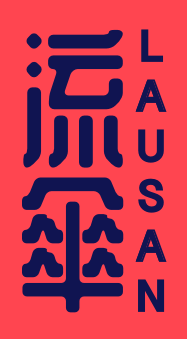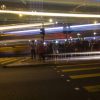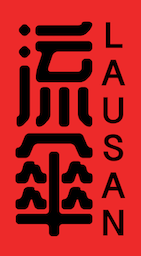Original: 【從memo紙到真塗鴉:「無大台」幫香港抗爭釋放了哪些慾望?】, published in Initium
Translator: E’n
If you would like to be involved in our translation work, please get in touch here.
The long months of June and July in Hong Kong were shrouded in smoke, tears and slogans that echoed other resistance movements around the world. Amidst all this, graffiti was present in both the foreground and background of the protests. The first one that caught my attention was one that said: “Don’t fuck me from behind (唔好搞我後面).”1 It had appeared on the 21st of June when protestors surrounded the police headquarters, where acts of “criminal” vandalizing seemed to foreshadow the struggle’s move toward a more radical direction.
Thereafter, the graffiti that has since caught worldwide attention was the series of inscriptions protestors left behind on July 1st when they stormed the Legislative Council (LegCo) complex. They opened umbrellas to protect the identities of the graffiti artists and spray painted the Hong Kong flag and pictures of pro-establishment lawmakers black; they daubed over the words “People’s Republic of China” (中華人民共和國), sparing only the words “Hong Kong Special Administrative Region” (香港特別行政區); they scrawled the plea to “Release the Righteous Demonstrators” (釋放義士), and condemned corrupt officials as “Dog Councillors” (狗官) among many other phrases in the same vein.
The graffiti inside these buildings were photographed, uploaded and circulated widely, instantaneously producing an iconography of protest that exceeded the boundaries of Hong Kong. The “Sunflower HK” (太陽花HK) slogan, for instance, clued us in on the lingering continuities between the political situations of Taiwan and Hong Kong. Apart from the two million people march among other remarkable events during the course of the movement, the best reflection of the protestors’ emotional turmoil and turn to more radical tactics was none other than this powerful message standing in the middle of the LegCo Chamber: “It was you who taught us that peaceful demonstrations are futile (是你教我們和平遊行是沒用).”
While the anti-extradition bill movement had shown no signs of slowing down at that point, sanitation workers were beginning to scrub the graffiti in these sites, extinguishing the last traces of a fleeting but historic moment in which pro-democracy protestors very literally took back the legislature. Nevertheless, any reflection of the aftershock of the LegCo actions would be incomplete without also looking at the afterlives of the graffiti and their hitherto longtime absence from the scene of social movements in Hong Kong.
‘Hong Kong style’ conformity in a disobedient movement
It is not entirely correct to say that graffiti has been totally absent; graffiti has been a prominent feature of the actions I have personally been a part of in Hong Kong. Just off the top of my head, the stencils produced in the wake of Ai Weiwei’s forced disappearance in 2011 had a domino effect throughout the city. In 2013, murals in back alleys, created under the government-sponsored, cross-sector pilot urban beautification scheme “Back Alley Project @ Kowloon East”, were defaced with spray paint by anti-gentrification protestors in the Kwun Tong Business Area. In the same year, a person climbed onto a highway and surreptitiously replaced a “Kwun Tong Business Area” street sign with one that spelled “Art District”, reflecting the community’s resistance against attempts of art-washing under the pretext of “place-making.” In 2016, a group operating under the name “Black Rose” (unclear whether they are affiliated with the anarchist federation Black Rose/Rosa Negra) splashed ink at an office of the Urban Renewal Authority, leaving behind a message that lambasted dishonest and corrupt individuals for destroying communities and profiting from it: “A golden prize belt for murder and arson (殺人放火金腰帶).” Each of these examples tells us how graffiti has played an important role in social movements as “disobedient objects.”
The absence of graffiti is most likely due to the contradiction between its ideological reliance on disobedient logics and the rhythm of mainstream social movement in Hong Kong. The cadence of this mainstream has of course been rooted in the methods of peaceful, rational and non-violent action (和理非) that most of us have glorified in recent years. If you only take demonstrations and rallies into account, Hong Kong people must seem like the most civic-minded protestors in the world: nearly 2 million people took to the streets, and not one bin was overturned, car set on fire, or store looted. We have taken pride in the cleanliness of our streets after demonstrations, making a habit of applauding each other for quickly parting the crowds to make way for ambulances. But sometimes, I wonder whether this fixation with order is really unimpeachable. Thinking of Japan’s penchant for orderliness, discipline and social mores that favor silence, I am also wary of the dark side of this reticence and note the difficulty of mobilizing in response to social issues and the dangers of depoliticization there.
However, one of the most important social meanings of graffiti itself is its damage via vandalism. In No Logo, Naomi Klein identifies three forces vying for public space in an era when corporate greed has devastated the world: government, business and the people. For example, when a wall gets put up anywhere, the government can slap propaganda on it as it sees fit while businesses can buy up space and run their ads. Citizens, by contrast, do not have the right to take up public space, and to do so is to be seen as vandals. Over time, the “commons” in our imagination will vanish and we will likewise lose our right to space when every surface belongs to the market, on which the only permissible form of participation is to consume.
Graffiti is an act aimed at regaining our right to the city. It is also the least destructive means of taking back our collective power, but such ‘low-grade’ methods of destruction sometimes cause more anxiety among those who believe in privatization and exalt bureaucratic management.
Under these conditions, graffiti is an act toward regaining our right to the city. It is also the least destructive means of taking back our collective power, because in most cases, graffiti is only paint and does not inflict much structural damage. The damage it is more likely to cause is symbolic. However, such “low-grade” methods of destruction sometimes cause more anxiety among those who believe in privatization and exalt bureaucratic management. For example, in the early days of the Umbrella Movement in 2014, a simple graffiti of protest slogans appeared in the occupied area of Admiralty, but if I remember correctly, these interventions were swiftly blocked and the graffiti ultimately removed by a squad of prefects from the main organizing body. These acts of self-policing in anti-government contexts always reminded me of the youth who once hurled eggshells filled with paint at the portrait of Mao Zedong on June 4: they were apprehended by the student picket on the square, handed over to security forces, severely sentenced and incarcerated, leading eventually to mental disorders resulting from this tortured and lengthy process of persecution.
If we were to pick an allegory of this “Hong Kong-style” anxiety of discipline that paradoxically reveres conformity to the point of obsequiousness within social movements founded on disobedience, I propose the Lennon Wall in Occupy Central as an object for analysis. Located near Connaught Road and the government headquarters, the Hong Kong Lennon Wall is covered with colorful post-its on which people have written their hopes and dreams. The foreign media called this large-scale crowd creation the “color of dissent.” Unlike the original Lennon Wall in the Czech Republic, the Hong Kong version opted for easily removable post-its typically used in office contexts instead of the more stubborn medium of spray paint.
This precisely reflects the awkwardness of disobedience in the movement and its mixture of veneration and resentment toward authority. Sure, this could be the color of dissent, but maybe it is also the color of distress. I suspect that much of this anxiety comes from the traumatic public memory of the June 4 crackdown that has yet to dissipate. We are all afraid of “making mistakes” that would provoke the use of maximum force. But this anxiety also stems from the elite background of the Occupy leaders and the enthusiasm for media “re-presentation” in the mainstream social movements: we need to take a touching picture in the June 4 vigil, rallies and demonstrations need to appear orderly on television, and if foreign media gives us their seal of approval, so much the better. I am concerned about the prioritization of the representation of our actions and how our movement is re-presented in media. By focusing on representation and re-presentation, what are we actually making of our present?
‘No Big Stage’ and the vindication of graffiti
But how is the anti-extradition bill movement different? With many leaders from 2014 still serving heavy sentences and the widespread discontent against the extradition bill issue across the political spectrum, the 2019 movement may have become more “inclusive.” A friend who is frequently on the frontlines observed that the “Hong Kong-style” peaceful, rational, and non-violent demonstrations (和理非) have transitioned into a new phase of “peaceful, rational, and ready to charge with you (和理衝).” Like most people, I have been in awe of the scale of the 2019 movement. The resistance has made good on the promise that “we will be back”, and with much more sophistication at that. The lessons learnt from the failures of Occupy, after four years of rumination, have culminated into dynamic tactics and techniques that exceeded everyone’s expectations.
Many people have declared this a leaderless struggle—“no big platform (無大台)”—while Dr. Francis Lee, for example, described its organization as “open source”: the “big platform” still exists, but the role it plays is now different. These two perspectives may just be different ways to articulate the modes of decentralization in the movement. As someone who has the opportunity to interact with “zoomers” regularly, I would describe this decentralization as a student who opens many tabs on their browsers, jumping back and forth between different topics. The older generation may think they are not focused enough, but the fact is they have been able to do a lot more than us.
Of course, the emergence of graffiti is tied to this turn toward decentralization. Many of the desires, emotions, and actions that were “forbidden” in the past when there were large command centers have become visible. Actions such as making the song “Sing Hallelujah to the Lord” a song of protest, incorporating profanity into protest slogans, raising the black flag on July 1st, blockading the tax building, and occupying the LegCo complex, etc. would have been nearly impossible if there was a “big platform.” The phrase “be water” embodies this decentralization: action is no longer constrained by singular centralisms.
The emergence of graffiti is tied to this turn toward decentralization.
But does this decentralizing tendency mean a liberation of strategy with no pitfalls? There is no easy answer, and sometimes without the binds of a “big platform”, some of the more dangerous imaginations may also be given more breathing room to develop. Suicides may be an example. Of course, we understand why young people may be willing to lay down their lives to fight against the regime, and the murderer here would obviously be the government. But I can’t help but wonder, if there was a “big platform”, can these lives be saved? We all know that in recent years, social movements have become increasingly open to escalation to the extent that there is even a chilling urge toward martyrdom. The removal of clear leadership may enable these urges to spill over the edge. Decentralization is the playbook of struggle now, but how do we preempt human tragedy? Some South Korean organizers once said that because casualties and fatalities are nearly unavoidable in large-scale protests, more peaceful, rational, and non-violent methods have taken over the imaginary of dissent in recent years, focusing mostly on joyous interventions in the hope that no more lives will be sacrificed. The protests in Hong Kong now seem to be going in the opposite direction; we have no choice but to brace ourselves for a more vulnerable stage of struggle with a larger scale of death and harm.
The emergence of graffiti in the 2019 protests reveals the metabolic process of the movement. Not only does the movement have much more room for participants from different social backgrounds and with different preferences for strategy, it also shows just how determined protestors have been toward achieving their demands. In the era of decentralized resistance, radical care practices and mutual aid are also all the more necessary. Let us learn from these new mode of action that we have now unlocked through the logics and objects of disobedience with cautiousness and care: “Be water, but don’t drown.”
Translator’s notes
[1]The graffiti “Don’t fuck me from behind (唔好搞我後面)” makes a mockery of a police officer’s response to lawmakers in a heated discussion about what had been reasonable grounds for conducting mass stops-and-searches. In the evening of June 11, 2019, the day before the forcible second reading of the extradition bill in the LegCo, a group of police officers demanded to stop-and-search young people trying to exit the Admiralty MTR station. LegCo members Alvin Yeung and Au Nok-hin arrived at the scene and debated the issue with a station sergeant, who loudly exclaimed to reporters that this work was “reasonable, legal and honest.” In the commotion, the sergeant suddenly yelled, “Don’t touch my ass!” When he turned around to look for the culprit, he didn’t see anyone but his two colleagues, who were standing back-to-back behind him. This episode has since gone viral. ↩






